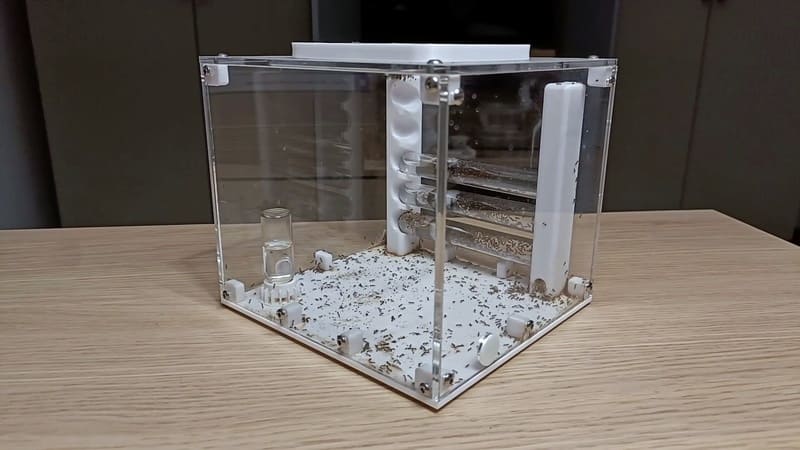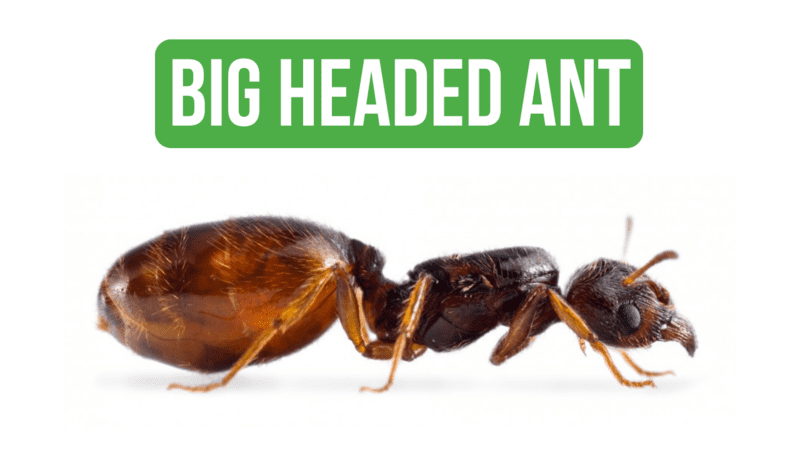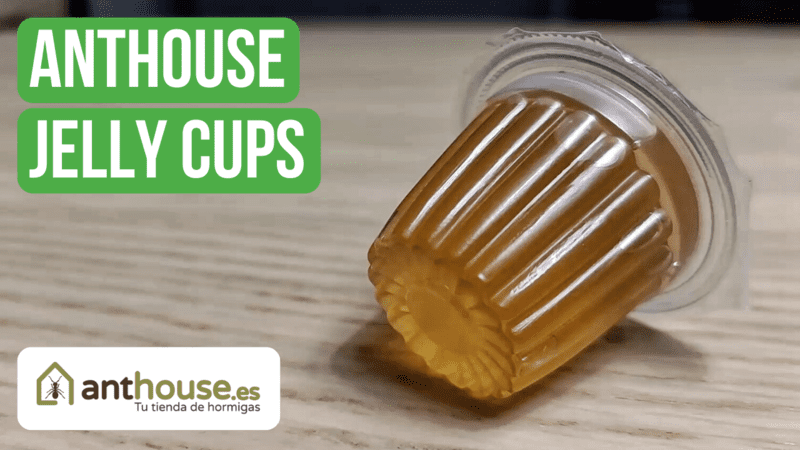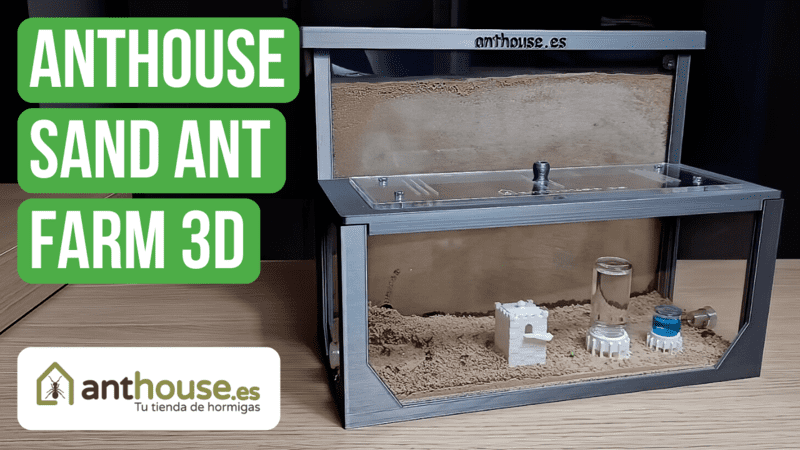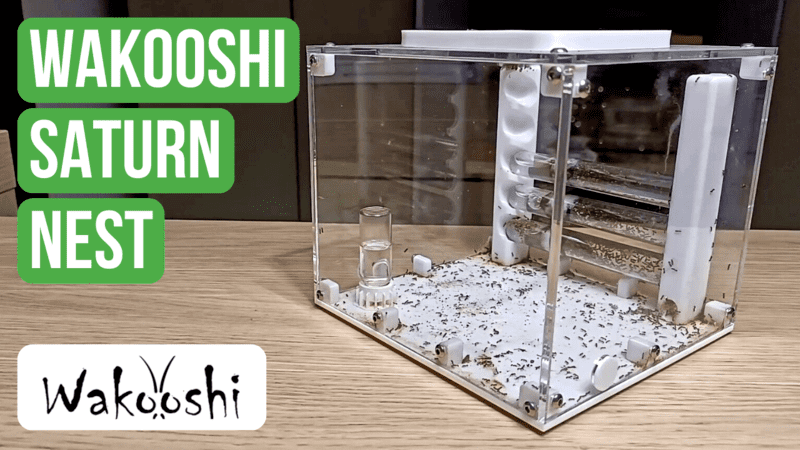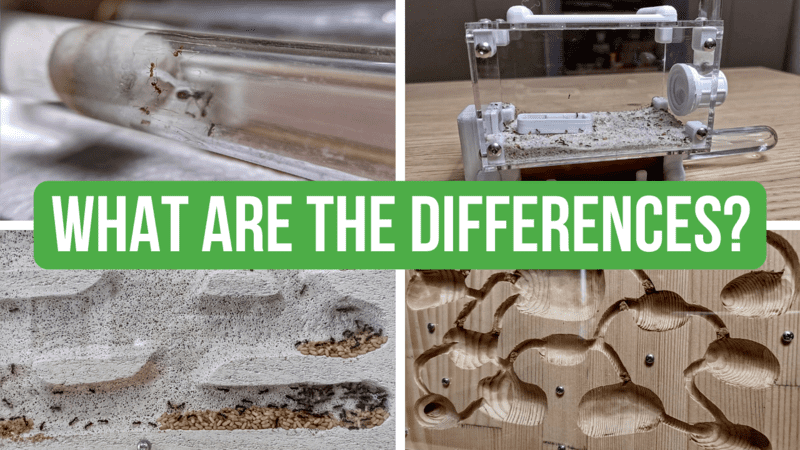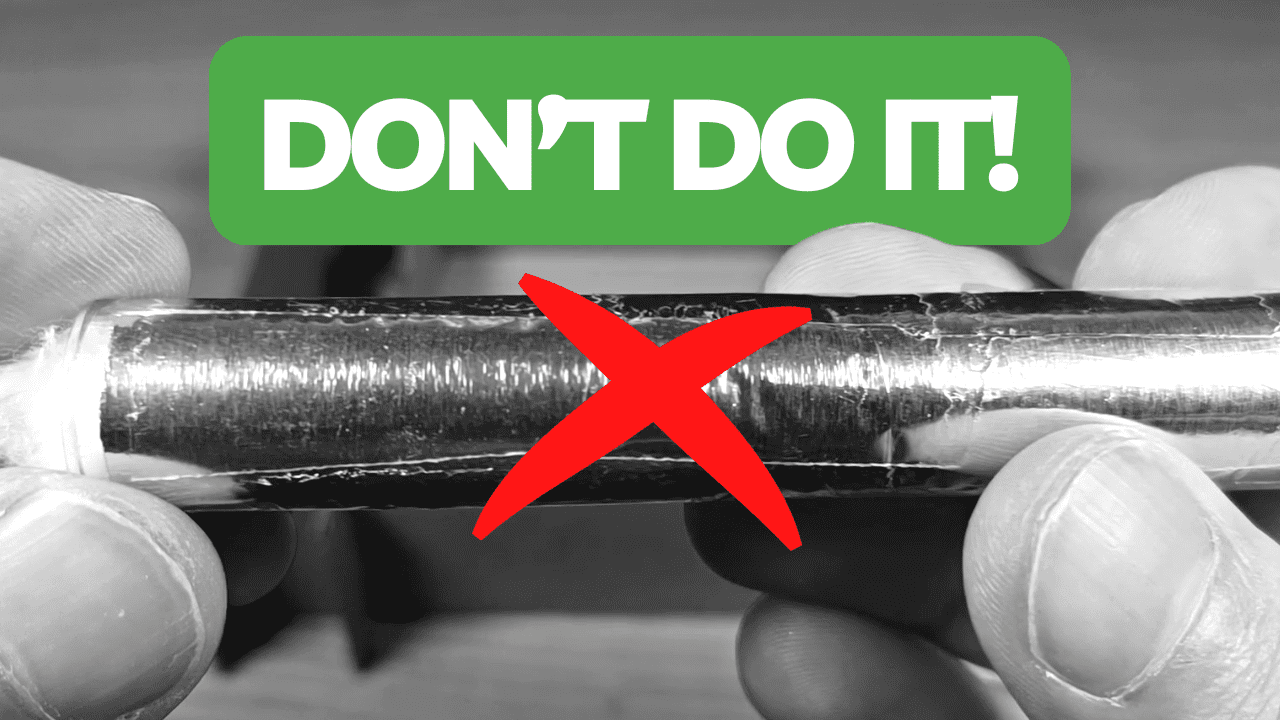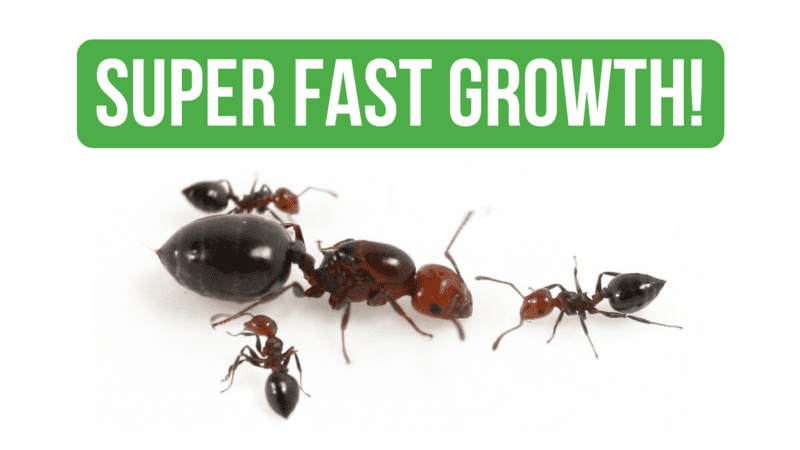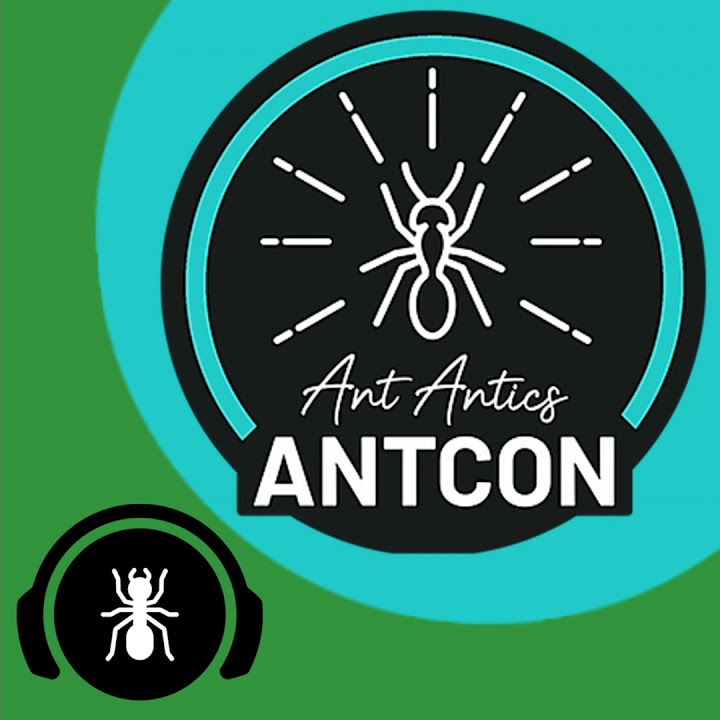Esthetic Ants Ytong Nest Review

Hi guys! I hope you’re doing well!
Today I'm going to make a little review of this cool new Ytong ant nest made by Esthetic Ants!
Let’s see if it’s any good!
Discount!
Get this extremely cool ant nest on the Esthetic Ants online shop! Use the discount code BRUMA to get 10% off your entire order!
Who Is Esthetic Ants?
Okay, let’s start from the basics. Who exactly is Esthetic Ants? In the unlikely case you have never heard of him, let’s take a moment to introduce him.
Esthetic Ants is a very popular YouTuber in the ant-keeping community.
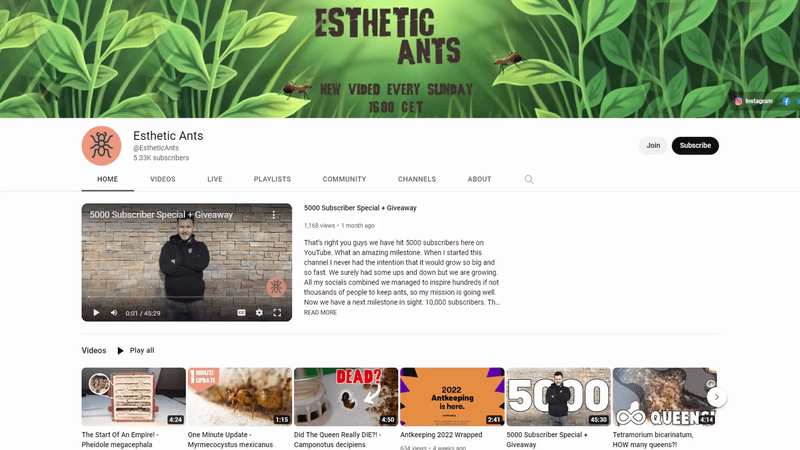
Born in 2020, his YouTube channel has reached thousands of passionate ant keepers all around the world, and now, more than ever, he continues to influence the community with his awesome ant-keeping products.
Very popular for his line of 3D-printed acrylic ant nests, his store offers everything you need to start your own ant colony from scratch, from newly mated queen ants to amazing nests and equipment!
Here you can find his YouTube channel in case you would like to check it out!
The Material
After this brief introduction, we can finally take a look at the nest! The first thing you notice when you see the nest is that it is made of Ytong! Yeah, Ytong!
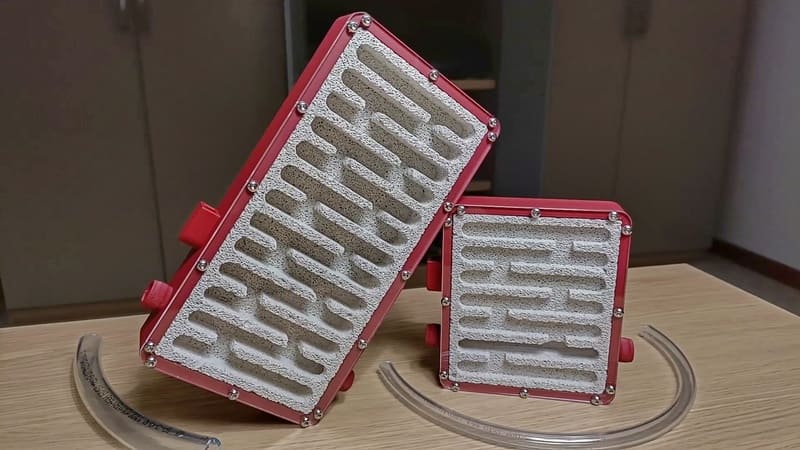
If you’re new to the hobby of ant keeping, you may be wondering: “Ytong? What’s that?” Let’s explain it really quickly.
Ytong is a particular type of aerated concrete, usually used in construction as an insulation material. It is extremely popular in ant keeping for its moisture retention properties and its ease of sculpting.
Thanks to these great properties, and also to the fact that it’s one of the cheapest materials available on the market, Ytong is the perfect choice when it comes to making DIY ant nests.
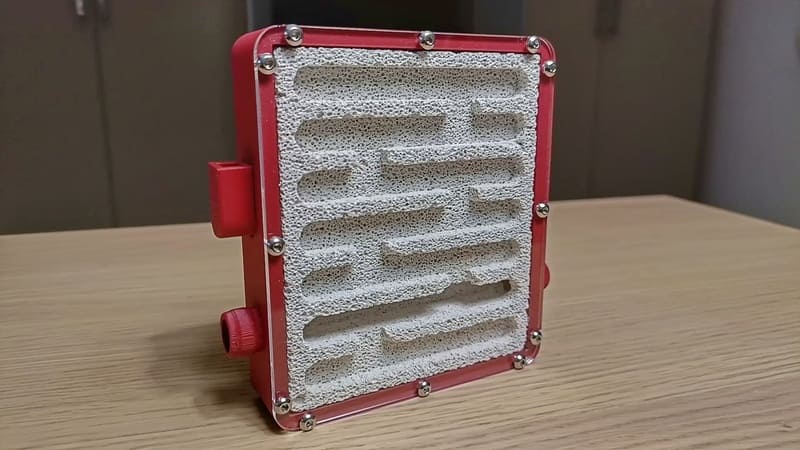
It is one of the best material choices for the majority of humidity-loving ant species, and it is the ideal option for a cheap but effective ant nest! In the era of 3D-printed and acrylic ant nests, it’s great to see some companies launching some old-style Ytong nests!
But what about acrylic? Is it better than Ytong when it comes to ant nests? Well, the answer is not that simple, and the verdict depends on many different factors! If you're interested in the topic, here you can find an entire article about it!
The Ytong block of the nest is really good; there are no signs of damage or imperfections of any kind. This is a very positive thing, considering that Ytong is an extremely fragile material!
On the right side, we find the Esthetic Ants logo, which, in my opinion, looks fantastic and gives the nest a professional touch!
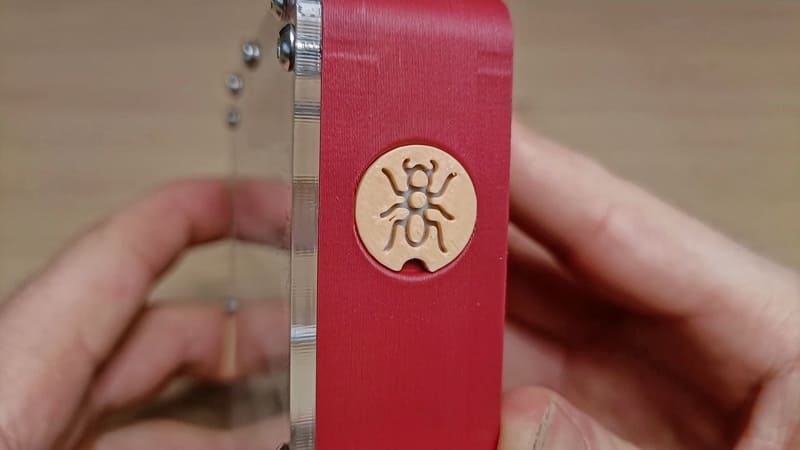
The nest is currently available in four different sizes: tiny, small, medium, and large. The only thing that changes between the various sizes is the height of the nest, as the depth and length are the same in all four models.
There’s even a DIY version of this nest! With this option, the Ytong block is new, and you can create the chambers of the nest as you like! That’s a really cool idea!
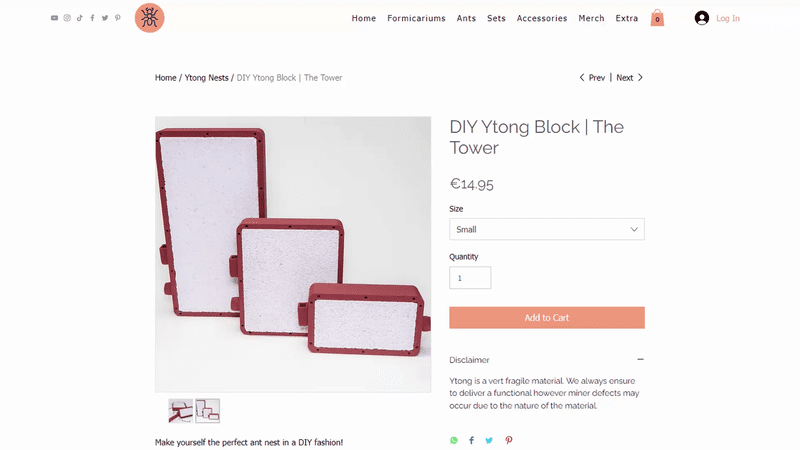
If you like the idea of creating your own custom ant nest using this fantastic and versatile material, you would definitely like this tutorial! In this one, I explain in detail how you can easily create your own personal Ytong nest using tools you may already have at home!
The Chambers
As you can see, the chambers of this nest have a very simple design, and they do not try to replicate the shape of the tunnels that ants dig in the dirt. That’s not at all a negative thing, in my opinion, as I personally prefer nests that have a more technical design.
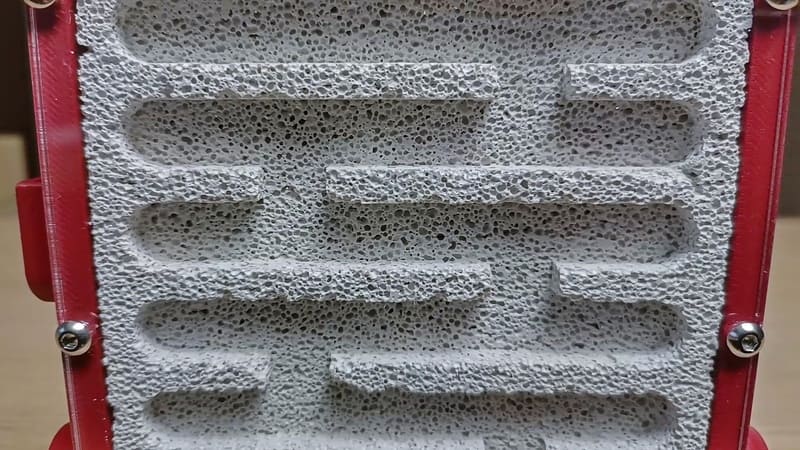
The Ytong block of the nest is probably excavated using some sort of CNC milling machine, giving the chambers extremely detailed cuts and very precise finishes! The chambers have the same height and are connected to one another via small passages.
When you buy the nest from the online shop, it gives you the option to choose between four different depths for the chambers: 5, 10, 15, and 20 mm. These are a lot of options! You can practically house every size of ant inside this nest!
The 3D-Printed Shell
If you have some experience in keeping ants inside Ytong nests, you may already know that this material is extremely soft and fragile! Many ant species, especially those with large major workers, like the ones from the genus Messor, can chew through this material with no problem!
This is a real problem for the ant keeper, as it needs to find a way to prevent the entire colony from escaping from the setup!
As you can clearly see, Esthetic Ants thought about this. All around the nest, we have a hard 3D-printed shell made of a plastic material, which works as a shielding system for the Ytong nest.
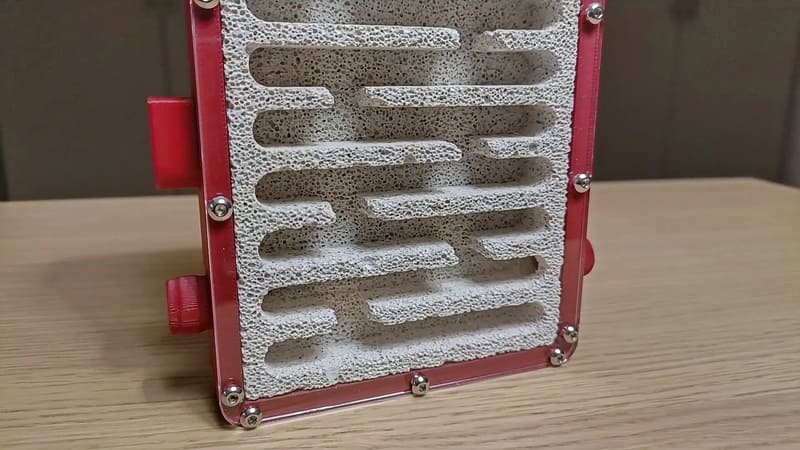
This material is extremely hard, and it’s almost impossible for an ant to chew through it! No matter which species of ant you’re planning to house inside the nest, there’s no way they can successfully create a hole through the shell and escape!
The Entrance Ports
The only sections through which the ants can travel are the two entrance ports of the nest. They are placed on opposite sides of the nest, one on the left and one on the right, and allow the ants to enter and exit the nest.
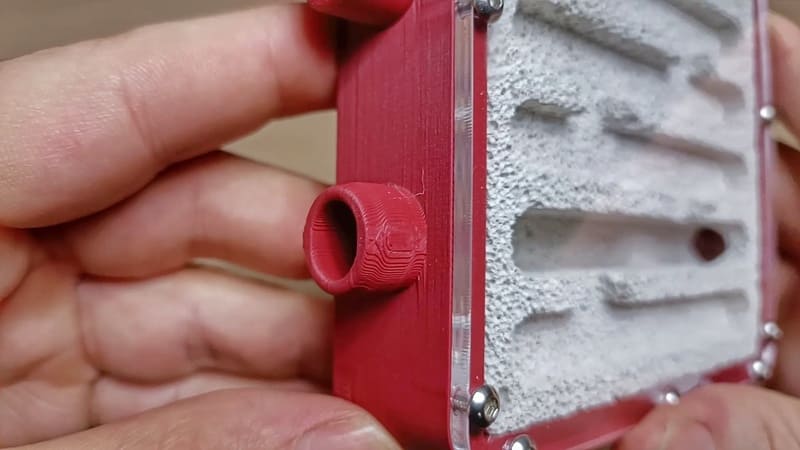
Like the external shell, the two ports are made using 3D printing technology and are almost impossible to damage! Even for the strongest ant in the world!
With this clever type of port, you can actually connect two different sizes of tubing. If you want to house a very large species of ant, you can opt for the largest alternative, placing the tube above the port, just like this.
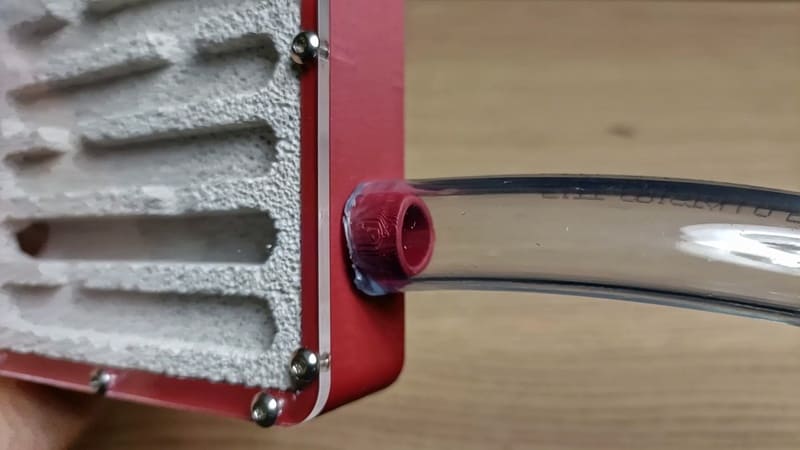
On the other hand, if the ants you want to house are not particularly large and voluminous, you can also decide to use a smaller tube, making it fit inside the port.
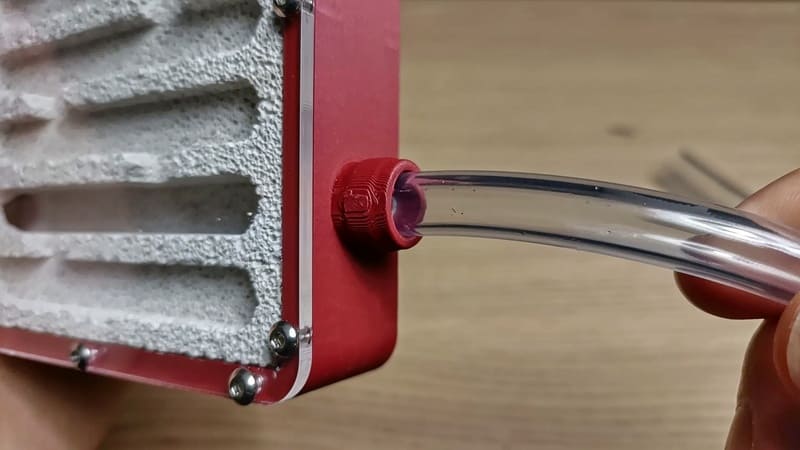
I really like this multi-size solution, and combined with the fact that you can also choose the depth of the chambers, it gives you the option of using this nest with almost every ant species!
The entrance ports of this nest are perfectly compatible with the outworld made by the same company. If you're thinking about getting this amazing Ytong nest, you cannot miss the outworld made specifically for this nest! Here you can find my detailed review!
The Hydration System
One of the coolest and most clever features of this nest is definitely the hydration system. As you probably already know, the majority of ant species need a constant humidity level inside the nest, and failing to provide it can cause irreversible damage to the health of the colony!
For this reason, every ant nest needs some type of humidity system. In this one, you can add moisture to the chambers by using this particular type of small tank.
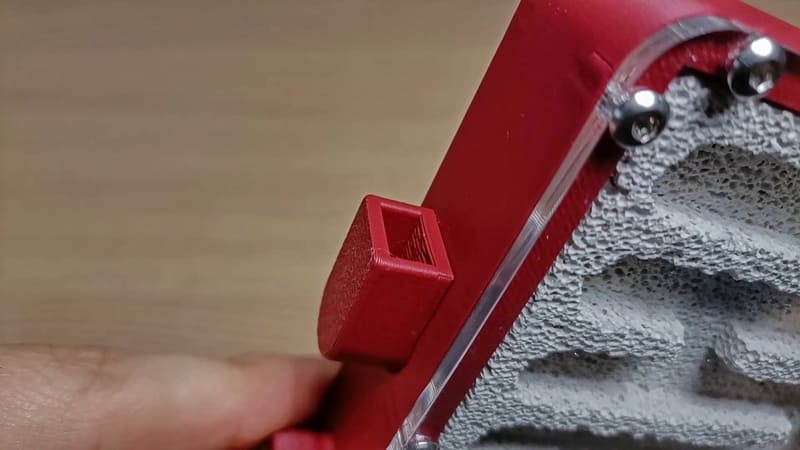
The tank is placed outside of the nest, and it enables the water to enter the nest slowly, without flooding the chambers! You just have to add some water using a pipette or another type of water container, and the job is done!
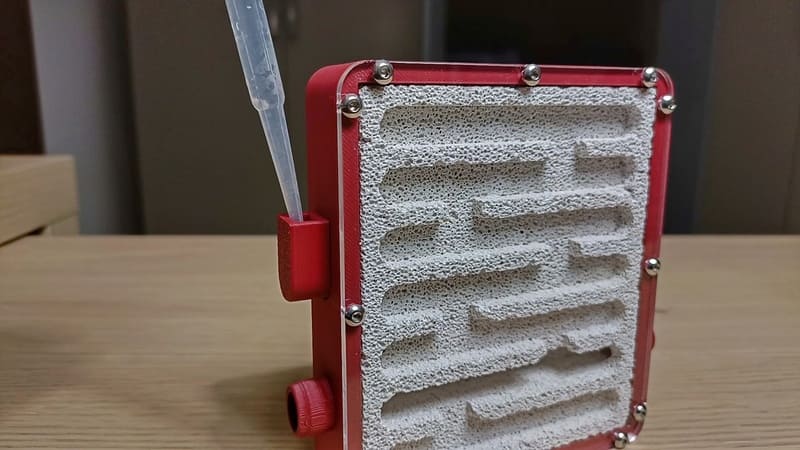
The water automatically travels through the pores of the Ytong block thanks to a physical phenomenon called capillary action, reaching every corner of the nest!
But the most clever aspect of this humidity system is this feature!
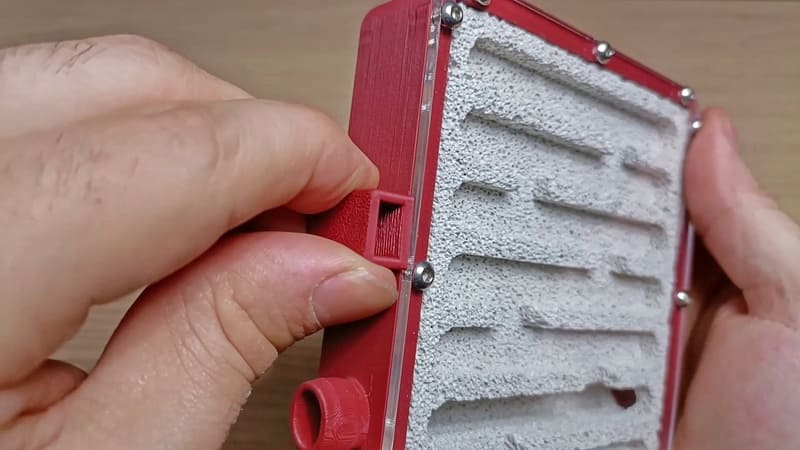
Look at this! This is so cool!
With this clever mechanism, you can rotate the little tank, which means that you can actually use this nest both vertically and horizontally!
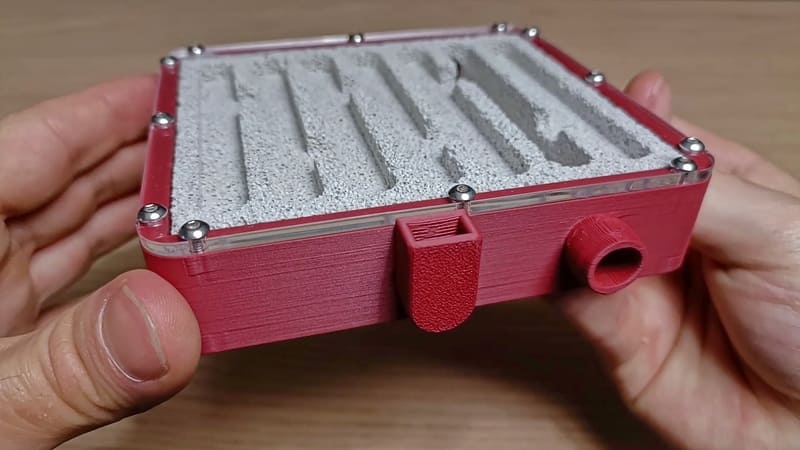
Cool idea, Esthetic Ants!
The Heating Clips
With the nest, you can also get these really useful heat cable or heat mat clips.
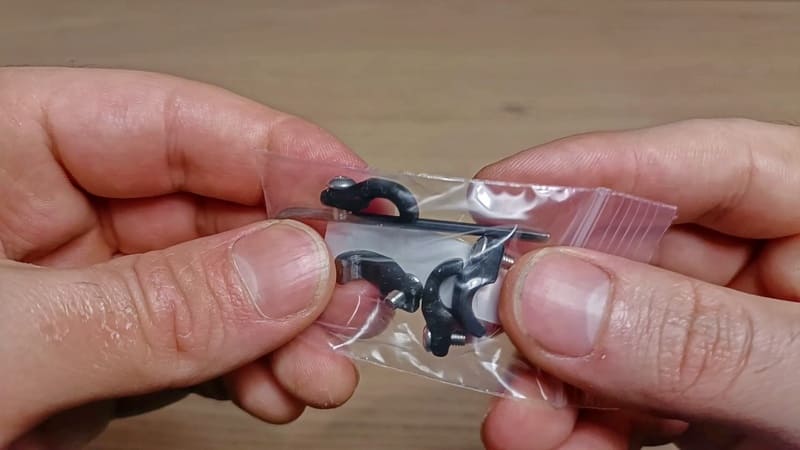
These are useful if you’re planning on providing your colony with additional heating to speed up the development of the brood and the growth of the colony.
But how do they work?
If we look closely at the back of the nest, we can see some small holes near the border of the 3D-printed shell.
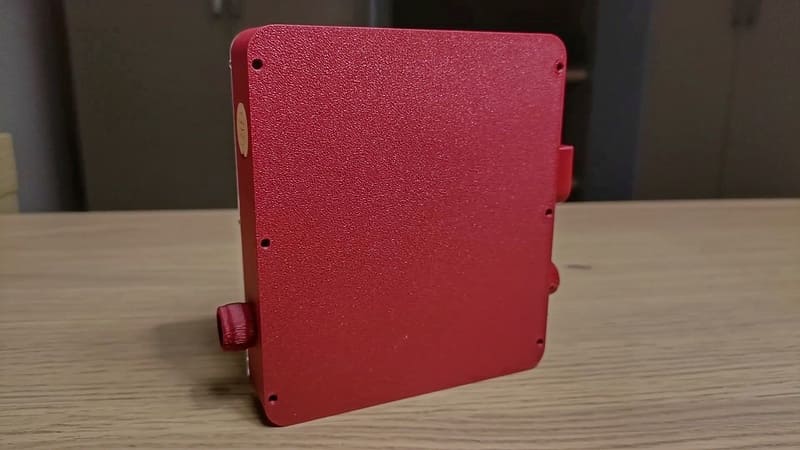
These holes are made specifically for the clips, and with them, you can attach a heat cable or a heat mat behind the nest, even if you want to keep the nest vertical!
To attach them to the back of the nest, you just have to screw the screws of the clips into the special holes using the provided Allen key. Nothing could be easier!
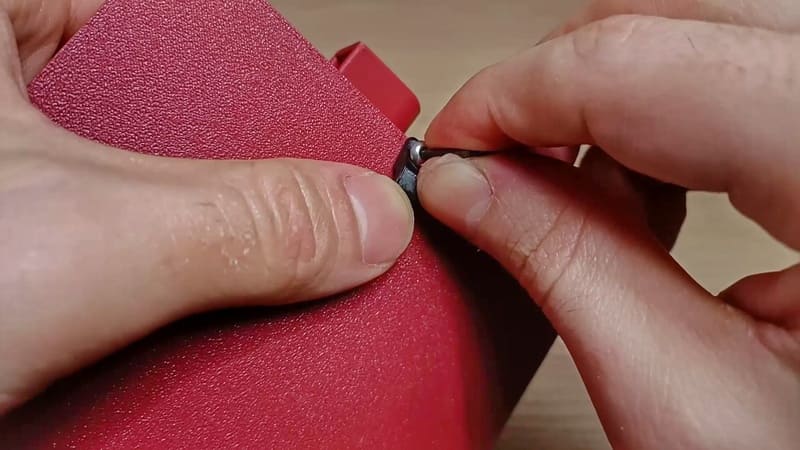
Now you can place the heat cable or the heat mat under the clips, tighten the screws a bit more, and the job is done! You have a heated nest!
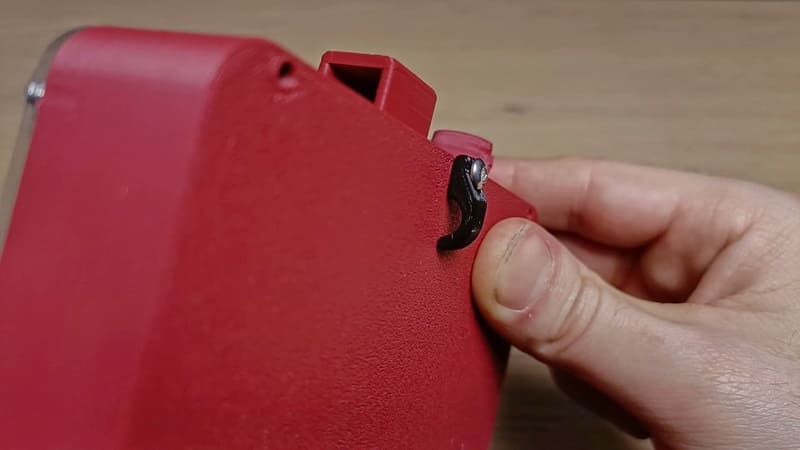
I hope you have found this guide helpful!
If you’re interested in some other types of ant nests or want to check out some other products, you will definitely like this review! This nest is perfect if you like the idea of having an all-in-one solution!
FAQs
Ytong is an aerated concrete that is popular for its moisture retention properties and ease of sculpting, making it ideal for ant nests.
The Ytong nest is available in four sizes: tiny, small, medium, and large, with height being the only difference.
The hydration system includes a small tank placed outside the nest that allows water to enter slowly via capillary action, maintaining humidity.
Yes, the nest features adjustable chamber depths and entrance ports compatible with various tubing sizes to accommodate different ant species.
Yes, the hard 3D-printed shell protects the fragile Ytong nest from damage and prevents ants from escaping.
Product Review

Ytong Nest
A really well-made Ytong ant nest, very rare to see in the era of 3D printed and acrylic nests! The nest combines all the extraordinary properties of the Ytong material with the practicality of 3D printing, creating an amazing nest that can house almost every species of ants! In conclusion, this is a fantastic ant keeping product, perfect for housing virtually any species of ant!
